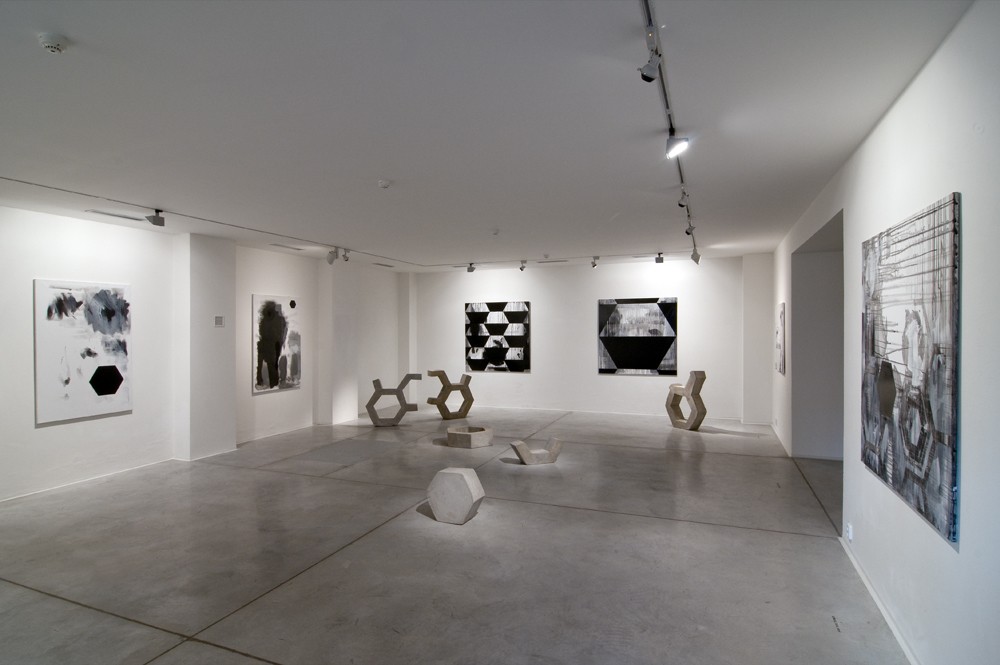Soma
The body, bees, and harmony
2012–2013
The word soma has different meanings in different cultures and languages. Tomáš Polcar understands it as the Greek word for body, and from here he works with the metaphor of the body’s unity as a whole consisting of its parts. As a symbolic shape, he has chosen the regular hexagon – a choice resulting from his beekeeping: the six-sided honeycomb shape quite naturally caught his attention. The hexagon is the ideal shape for the chamber in which new bees grow into integral components of the beehive. The honeycomb is perfectly suited for creating a lattice, and makes the best use of available space. The lattice (or network) is like a metaphor for the body, for its birth and decay. SOMA can stand for the Self-Organizing Migrating Algorithm of evolutionary processes on whose basis carbon is organized.
Regardless of its actual mass, the installation (which consists of hexagonal cement segments) makes a light and fragile impression while self-evidently demonstrating the unity of the relationship between the part and the whole, the birth and decline of the body’s network structure as represented by hexagonal cement cells. It also hints at the possibilities of expanding into space – either on a hexagonal foundation or as a kind of freestanding postmodern Steinerian/Gaudían arch consisting of six-sided segments like a tortoise shell – but it also evokes the idea of unusual creations ready to set out on their own.
Polcar often seeks out sacral spaces such as the funeral chapel of Louny’s Jewish community or a deconsecrated church in Chomutov. He first exhibited his cement segments in the synagogue in Prague’s Libeň district. Their current site is outdoors in an old quarry – today’s Střelnice (“shooting range”) near Slavětín. The stone from this site was used to build the houses in the surrounding villages. The work’s conceptual meanings are intensified by the spontaneous sacrality of the former quarry – a natural place reshaped by man, a place that allows us to experience a symbolic into and back out. Under the arch of trees, Polcar also fulfills the possibility – only hinted at in the exhibition in the synagogue – that the sculptures might emerge from their petrified state and truly come to life.
The black-and-white paintings entitled Soma further develop the metaphor of the hexagon, and – through an op-art illusion of two spatial planes produced by dividing the hexagons in half to create two illusory spaces – play with the idea of interconnected worlds. The first plane gives rise to a bulwark of geometric abstraction painted in accordantly synthetic lacquer, while the rear plane opens up onto a landscape rendered in acryl. Polcar here loosely develops the flowing and transformation found in Decay Engenders Life and the austere geometry of Atomos. The never-ending latticework disappears within the unfinished nature of the primed canvas, as if having drifted out of the realm of our understanding, outside our space and time. The result is a potential tension between the symbolic spaces of actual landscape and abstract idea, as well as between the two painting techniques: lyrical acryl and glossy, technical synthetic paint. An interesting thing happens here: Strangely enough, this tension does not build up any further, but is eventually diffused by the harmonizing shape of the hexagon. Polcar breaks free of the original concept of the square format and finds freedom of expression in psychologically suggestive free associations on canvas.
© Lucie Šiklová


